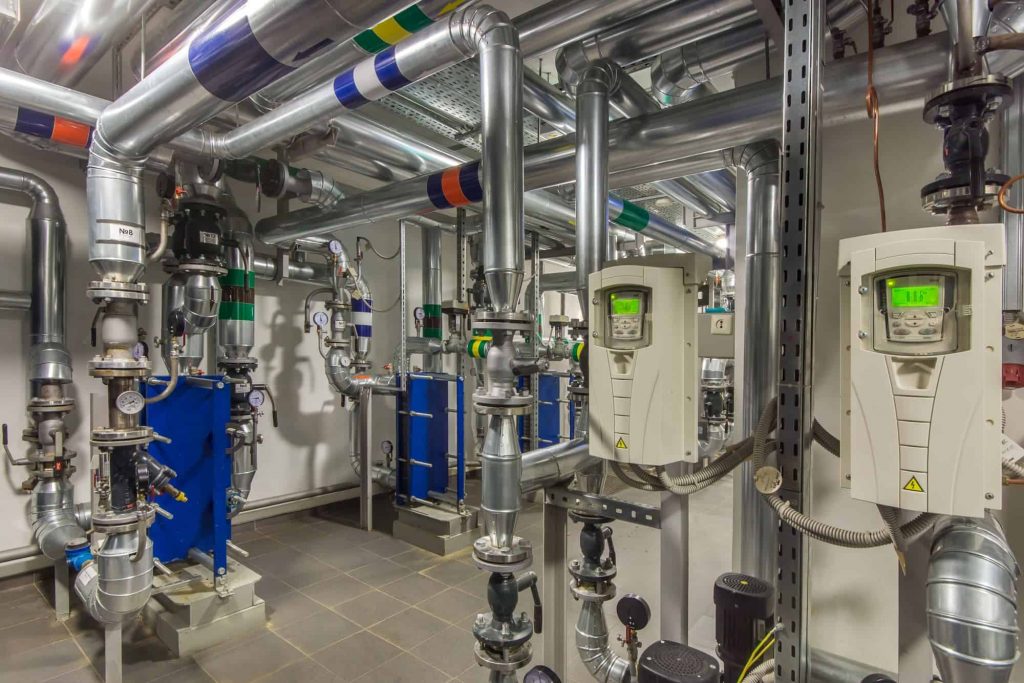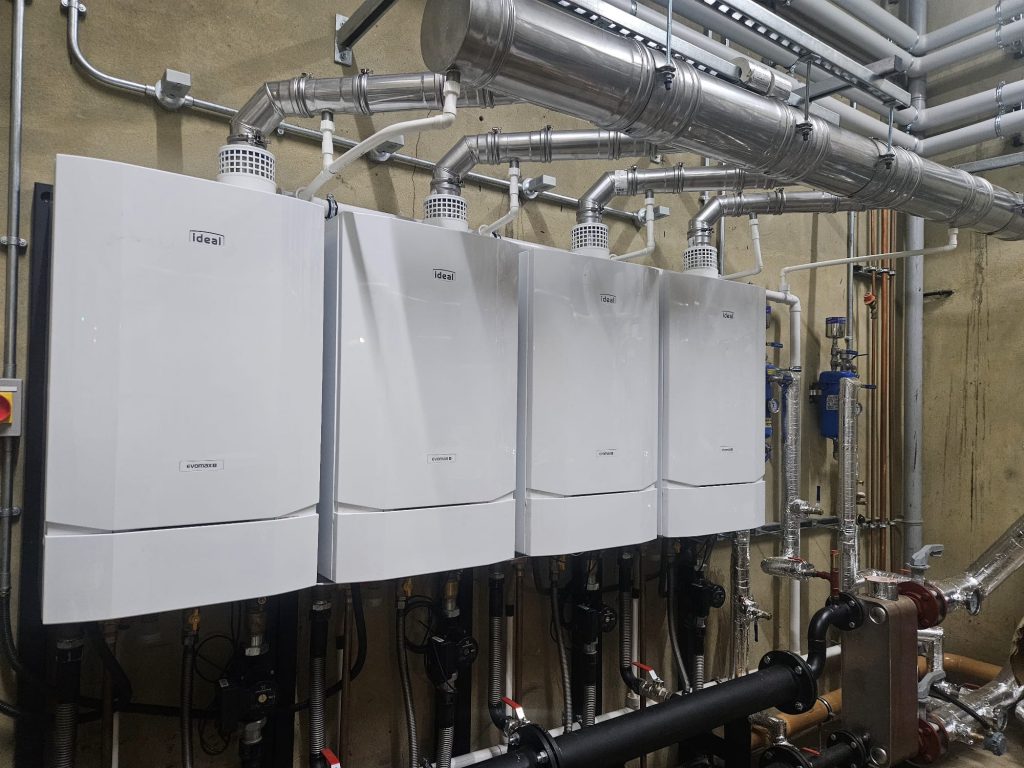
Managing a commercial property requires a deep understanding of the building’s mechanical and energy systems. Among the most important components is the thermal systems, which regulates heating, cooling, ventilation, and overall indoor climate control. A well-designed commercial thermal system helps maintain occupant comfort, protect equipment, improve energy efficiency, and reduce operational expenses. Yet many facility managers only encounter the system when problems arise—resulting in costly repairs and unnecessary downtime.
This complete guide explains how commercial thermal systems work, why they matter, and what facility managers can do to keep them performing at peak efficiency year-round.
What Is a Commercial Thermal System?
A thermal system is a network of components designed to control temperature, airflow, and energy distribution within a building. In commercial environments—such as offices, hospitals, warehouses, hotels, and industrial facilities—thermal systems are larger, more complex, and designed to support high occupancy and continuous operation.
A typical commercial thermal system includes:
- Heating equipment (boilers, furnaces, heat pumps)
- Cooling systems (chillers, rooftop units, VRF systems)
- Air handlers and ventilation systems
- Duct distribution networks
- Building automation and control systems (BAS)
- Energy recovery units
- Pumps, piping, and heat exchangers
By working together, these components create a stable indoor environment that supports comfort, productivity, and equipment protection.
Why Thermal Systems Are Essential in Commercial Buildings
The performance of a commercial thermal system affects everything from energy costs to indoor air quality. Understanding these impacts helps facility managers make better maintenance and operational decisions.
1. Energy Efficiency
Thermal systems typically account for more than half of a commercial building’s energy use. A well-optimized thermal system can significantly reduce electricity and fuel consumption, translating into major cost savings.
2. Occupant Comfort
Temperature fluctuations, poor airflow, and inconsistent humidity can all lead to tenant or employee discomfort. Maintaining a balanced thermal system ensures a stable, comfortable indoor environment.
3. Equipment Protection
Many commercial facilities house sensitive equipment—servers, machinery, medical devices—requiring precise temperature control. A malfunctioning thermal system can lead to expensive downtime.
4. Compliance and Safety
Improper thermal system performance can violate building codes, endanger occupants, and increase risk of fire, mold, and poor air quality. Regular inspections ensure compliance with safety and environmental standards.
Key Components of a Commercial Thermal System
To properly manage a building’s thermal needs, facility managers must understand the major components of the system.
1. Heating Equipment
Commercial heating systems include:
- Boilers – Common in large facilities; heat water or steam for distribution
- Furnaces – Use gas or electricity to heat air directly
- Heat pumps – Energy-efficient systems for both heating and cooling
- Radiant heating systems – Provide even, comfortable warmth
These components form the foundation of winter building comfort and require routine inspections for safe operation.
2. Cooling Systems
Cooling systems remove heat and maintain indoor temperatures during warm months. Typical equipment includes:
- Chillers – Central cooling units for large commercial buildings
- Rooftop units (RTUs) – Self-contained heating/cooling systems
- VRF systems – Highly efficient, flexible temperature control
Commercial cooling is critical for tenant comfort and equipment protection.
3. Ventilation and Air Distribution
Ventilation ensures fresh air supply and proper circulation. Components include:
- Air handling units (AHUs)
- Exhaust fans
- Ductwork
- Filters and purifiers
An effective ventilation system reduces airborne contaminants and maintains optimal indoor air quality.
4. Thermal Controls and Automation
Building automation systems (BAS) allow facility managers to monitor and adjust thermal system settings in real time. Key features include:
- Temperature zoning
- Humidity control
- Occupancy-based adjustments
- Energy monitoring
- Remote diagnostics
Smart controls significantly improve efficiency and reduce manual workload.
Understanding How Commercial Thermal Systems Work

A commercial thermal systems uses heat transfer principles—conduction, convection, and radiation—to maintain temperature balance throughout the building. Here’s a simplified look at the process:
- Heat Generation or Removal
Heating equipment adds warmth, while cooling systems remove heat. - Air Distribution
Air handlers push conditioned air through ducts to different zones. - Ventilation
Fresh outdoor air is introduced to maintain air quality. - Control and Monitoring
Sensors adjust temperature, humidity, and airflow to match building demand. - Energy Management
Automated systems optimize performance to reduce energy waste.
A properly functioning commercial thermal systems allows all building zones to experience consistent, comfortable temperatures regardless of weather conditions or occupancy levels.
Common Problems in Commercial Thermal Systems
Even the best systems can fail without ongoing oversight. Facility managers should watch for the following issues:
1. Dirty or Clogged Filters
This reduces airflow, increases energy use, and strains equipment.
2. Faulty Sensors or Controls
Incorrect readings disrupt temperature balance and inflate energy costs.
3. Leaks in Ductwork or Piping
Heat loss and reduced efficiency are common consequences.
4. Poor Ventilation
Insufficient fresh air increases health risks and lowers productivity.
5. Underperforming Equipment
Aging or oversized/undersized equipment leads to uneven temperatures and high utility bills.
Maintenance Tips for Facility Managers
A commercial thermal systems lasts longer and performs better when properly maintained. Key tasks include:
1. Schedule Regular System Inspections
Quarterly or bi-annual inspections catch problems before they escalate.
2. Replace Filters Frequently
This is one of the simplest—and most impactful—maintenance steps.
3. Monitor Building Automation Alerts
Use BAS reports to track inefficiencies or irregularities.
4. Clean Coils and Fans
Dirty components reduce airflow and heat transfer.
5. Check Ductwork and Piping Insulation
Poor insulation forces the system to work harder, consuming more energy.
6. Plan for Equipment Replacement
Most major thermal systems components have a lifespan of 10–20 years. Budgeting in advance prevents surprise expenses.
How Modern Technology Improves Thermal Systems Performance

Newer systems come equipped with advanced features designed for efficiency and reliability:
- Smart sensors that adjust conditions in real time
- Energy recovery ventilators that reduce energy loss
- Variable-speed motors for quieter, more efficient operation
- Predictive maintenance technology using AI and analytics
- Zonal controls for more precise temperature management
Upgrading to modern technology can reduce energy use by 20–40% depending on the building type.
